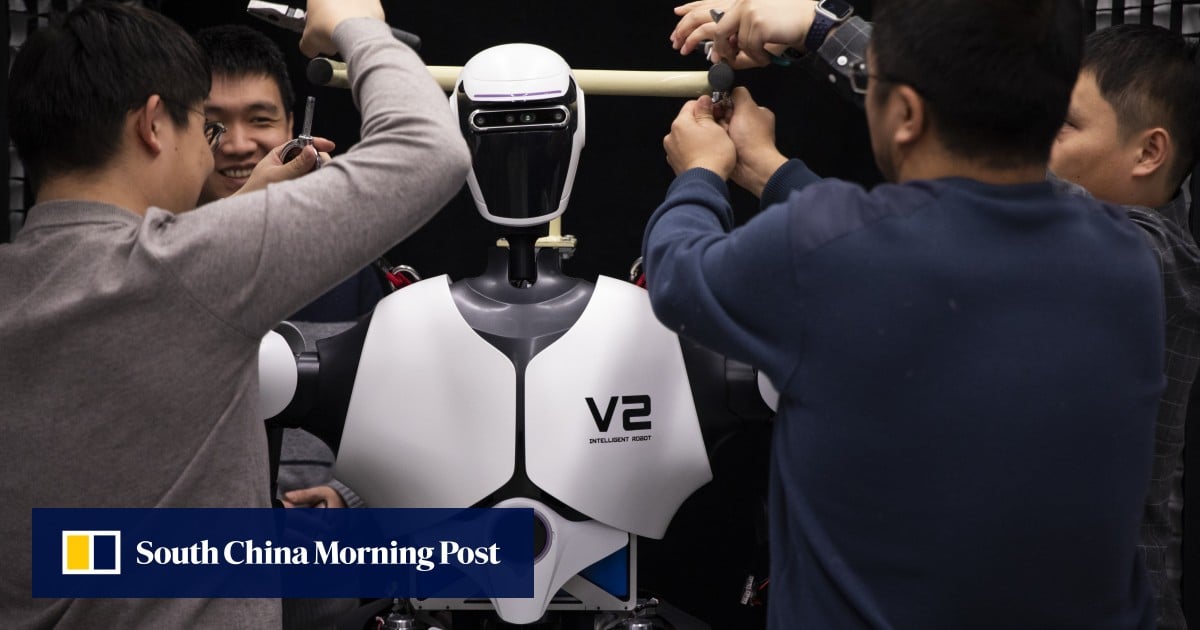
Revolutionizing China’s Economy: The Emergence of Humanoid Robots
Key Takeaways:
Over the years, China has emerged as a global powerhouse, leveraging technological innovation to reshape its economy. One such innovation creating a stir is the revolutionary rise of humanoid robots. These humanoid robots, equipped with artificial intelligence, machine learning capabilities, and advanced motor skills, have the potential to transform numerous industries, making them more efficient, productive, and cost-effective.
The rapid progress in the field of robotics in China is an exciting development with far-reaching implications for China’s economic potential.
The Current Landscape of Humanoid Robots in China
China’s commitment to innovation and technology has accelerated the development and adoption of humanoid robots. Today, China boasts a booming robotics market, fueling advancements in robotics research and design. The extensive investments in research and development (R&D) have positioned China as a hotbed for robotics innovation.
A noteworthy development is the collaboration between Chinese robotics companies and prominent universities. This synergistic partnership has propelled the advancement of humanoid robots by fostering cutting-edge research and facilitating knowledge sharing. The collaboration has not only expedited the development process but has also contributed to a rich talent pool of researchers and engineers specializing in humanoid robotics.
Implications for Industry
Humanoid robots have particularly found applications in sectors such as manufacturing, healthcare, hospitality, and customer service industries. In manufacturing, these robots streamline production lines, enhance assembly processes, and increase operational efficiency. By automating mundane and repetitive tasks, humanoid robots free up human workers, who can then be empowered to focus on more complex and creative endeavors, ultimately driving innovation forward.
Moreover, with their dexterity and precision, humanoid robots provide significant assistance in healthcare. These robots help with tasks like patient monitoring, medicine administration, and even surgical procedures. Dependable and accurate, they improve patient safety and reduce the overall workload of medical professionals, allowing them to allocate their time and expertise suitably.
China’s Global Standing in Humanoid Robot Development
China has steadily emerged as a global leader in humanoid robot development. With its substantial government support and market demand, China managed to nurture a flourishing ecosystem to support robotic advancements. The sheer size of China’s population, coupled with the adoption of automation and robotics in manufacturing, ensures a substantial local market for humanoid robots, which, in turn, allows manufacturers to innovate more quickly and effectively.
Chinese companies are not only focused on domestic demand but are also venturing into international markets. By exporting their robotic solutions worldwide, Chinese companies are establishing themselves as formidable players on the global stage. The presence of Chinese humanoid robots in international markets has the potential to disrupt traditional industries and reshape business landscapes across the globe.
The Benefits of Humanoid Robots in China’s Economy
The relentless pursuit of advanced humanoid robotics technologies in China brings manifold benefits to the country’s economy:
-
Enhanced Productivity:
Humanoid robots help optimize workflow, reducing errors and increasing production speed. The manual labor component of various industries can be automated, leading to improved efficiency and productivity. Manufacturers utilizing humanoid robots witness shorter production cycles with consistent quality across a vast range of products. -
Increased Efficiency:
By incorporating AI and machine learning capabilities, humanoid robots learn from their experiences and continually improve their performance. They adapt to various situations, making them versatile assets in diverse industries. With automated, efficient systems in place, businesses can reduce costs associated with wasted time and resources, ensuring better allocation of available resources. -
Reduced Labor Costs:
While upfront investments in humanoid robotics technology may be significant, the long-term benefits outweigh the costs. With automated processes and reduced reliance on human labor, businesses can save significantly on labor costs. This shift also allows workers to be upskilled and perform more value-added tasks, ultimately leading to a more prosperous and resilient workforce.
Frequently Asked Questions
Conclusion
The revolutionary rise of humanoid robots in China signifies a transformational force that brings immense potential for economic growth and societal advancement. With continuous advancements and investments in research and development, China is empowering its economy by leveraging the productivity, efficiency, and reduced labor costs offered by humanoid robotics. This ubiquitous integration of robotics across industries is unleashing China’s economic potential and cementing its position as a global leader in the robotics arena.
Source: insidertechno.com